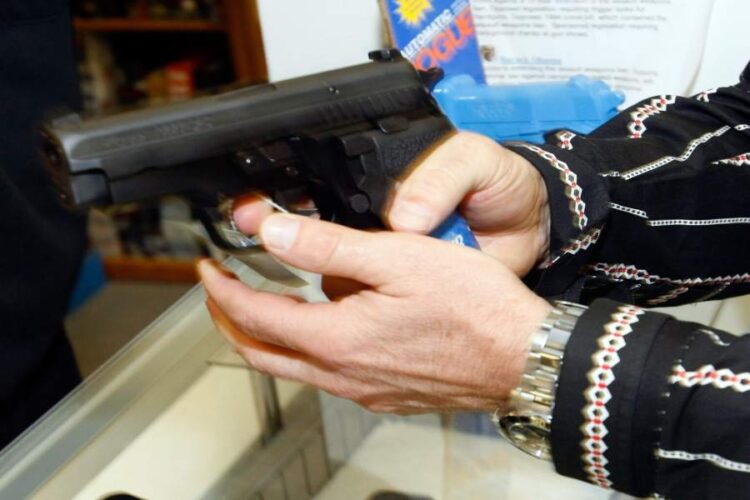In a decisive moment for U.S. firearm legislation, the Supreme Court upheld a pivotal federal statute that prohibits individuals with domestic violence restraining orders from possessing firearms. This 8-1 ruling carries profound implications for the ongoing debate over the Second Amendment.
Authored by Chief Justice John Roberts, the decision certainly supports the government’s ability to enact specific, targeted restrictions on gun ownership. This judicial stance aims to bolster public safety and provide crucial protections for vulnerable groups often threatened in domestic violence scenarios.
This ruling represents a significant affirmation of the state’s role in regulating firearms in a manner that prioritizes the welfare and security of its citizens. By aligning with historical precedents that restrict gun access for individuals deemed a threat, the Court has reinforced a legal framework that balances individual rights against collective safety.
The decision underscores a broader judicial perspective that recognizes the necessity of nuanced measures in gun legislation tailored to address specific risks without broadly infringing on constitutional rights. This approach suggests a judicial acknowledgment of the complex interplay between protecting civil liberties and ensuring public safety in contemporary America.
Background of the Case
The case at the center of this pivotal Supreme Court ruling involved Zackey Rahimi, a Texas resident whose troubling history of violence and disregard for legal restraints brought into sharp focus the intersections of domestic violence, gun ownership, and public safety.
Rahimi, despite being explicitly prohibited by a court-imposed restraining order from possessing firearms due to his propensity for violence, continued to maintain an arsenal and engage in public shootings.
This blatant defiance escalated to several incidents, including a confrontation where he fired into the air at a fast-food restaurant following a minor dispute, highlighting the potential danger he posed to public safety.
Rahimi’s continued possession of firearms and his subsequent violent actions raised critical legal questions about the enforcement of restraining orders and their effectiveness in preventing further violence.
His arrest propelled the issue into the legal system, challenging the constitutionality of prohibiting individuals under restraining orders from owning guns. The core of the legal debate centered on whether such prohibitions unjustly infringe upon the Second Amendment rights of individuals or whether they are a necessary measure to protect victims of violence and the broader community.
This case thus served as a litmus test for the limits of gun rights in situations where individuals have demonstrated a clear risk to others.
The Court’s Decision
Chief Justice John Roberts, writing for the majority, emphasized that the regulation aligns with America’s longstanding tradition of firearm controls designed to prevent harm. This ruling, he noted, supports “measures consistent with the nation’s historical tradition of firearm regulation,” directly addressing the balance between individual rights and societal safety.
Justice Clarence Thomas, in his dissent, expressed concerns that this decision could potentially infringe on the rights of a broader population. He criticized the majority for not identifying a precise historical precedent for disarming individuals based solely on potential interpersonal violence. This highlights a broader judicial and philosophical debate about how historical context should inform contemporary interpretations of constitutional rights.
This ruling has profound implications for current and future gun legislation. It effectively sets a precedent that certain restrictions on gun ownership do not violate the Second Amendment, particularly when they aim to protect individuals from domestic violence. This could influence a variety of pending and future legal challenges to similar state and federal restrictions.
The decision has been met with mixed reactions. President Joe Biden and various gun control advocacy groups applauded the ruling, viewing it as a crucial victory for public safety and the protection of abuse victims. Gun rights proponents, however, including notable figures from the NRA, voiced disappointment, arguing that the decision could pave the way for more stringent and potentially overreaching gun control measures.
The ruling arrives at a time when the U.S. is deeply divided over how to manage firearms violence, underscored by frequent mass shootings and a rise in gun-related crimes. The Supreme Court has underscored a potential path forward in the national policy debate on firearm regulation by affirming the legality of specific, targeted restrictions. This path seeks to balance individual rights with necessary protections for public safety.
The decision clarifies but does not completely resolve the ongoing debate over the extent of the Second Amendment’s protections. Legal analysts predict that this ruling will influence numerous other cases concerning gun rights, potentially affecting legislation on both state and federal levels. The Court’s emphasis on aligning modern firearm restrictions with historical traditions suggests a nuanced approach to future Second Amendment jurisprudence.
Beyond the legal implications, the ruling also impacts the societal landscape concerning domestic violence and gun ownership. Advocates for domestic violence victims argue that the decision will save lives by making it harder for abusers to obtain firearms legally. This aligns with broader public health and safety strategies that prioritize preventive measures to tackle gun violence.
The Supreme Court’s decision to uphold the federal law barring gun ownership for individuals under domestic violence restraining orders represents a significant moment in the ongoing interpretation of the Second Amendment.
It reaffirms the government’s ability to impose reasonable restrictions on gun ownership, balancing individual rights with the need to protect public safety. As the nation continues to debate the appropriate limits of gun ownership, this ruling will undoubtedly play a central role in shaping the legal and legislative frameworks governing firearms in the United States.
This in-depth examination of the Supreme Court’s ruling offers a comprehensive understanding of its implications. It provides a detailed analysis of judicial reasoning, public reactions, and potential future impacts. It is a crucial resource for anyone seeking to navigate the complex interplay of gun rights and public safety legislation in America.










